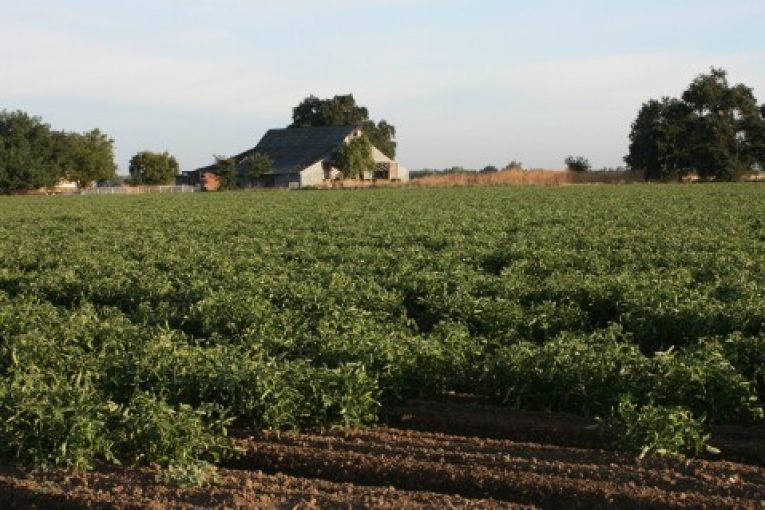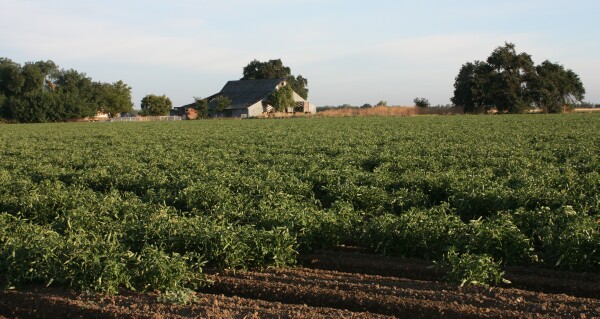

by Judy Corbett, Alan Hirsch, Roberta Millstein, Alan Pryor, Bob Schneider, David J. Thompson, Colin Walsh, Stephen Wheeler, James Zanetto, and the Sierra Club Yolano Group
- Develop infill opportunities first
- City to hire consultant or add staff to actively pursue and encourage implementation of the Downtown Plan and other infill opportunities.
- Council action to initiate redevelopment of city-owned parcels on Fifth Street and communicate with potential nonprofit partners.
- Council to approach school district regarding redevelopment of 5th Street properties.
- Upzone parcels along arterial corridors and in shopping centers to a minimum height for mixed-use development so as to use land efficiently in central locations.
- 100% affordable housing overlay zoning like the Cambridge model to create new affordable
 housing redevelopment opportunities in already developed areas. By focusing zoning changes only for affordable housing it gives affordable housing developers the opportunity to initiate redevelopment projects without competing against more lucrative for profit market rate developments for development sites.
housing redevelopment opportunities in already developed areas. By focusing zoning changes only for affordable housing it gives affordable housing developers the opportunity to initiate redevelopment projects without competing against more lucrative for profit market rate developments for development sites. - Reduce parking requirements for these sites, including considering car-free housing on certain sites, along with low parking maximums, to encourage redevelopment & affordability; a package of policies to reduce motor vehicle use such as on-site car-shares, market pricing, good bike parking, transit improvements, etc.
- Initiate and complete General Plan or Specific Plans updates. This will provide a comprehensive look at the future and ensure consideration of cumulative impacts including traffic, water, wastewater and other infrastructure. A General Plan is preferred but an option might be a Specific Plan for the Northeast and /or Northwest areas. Any new planning process should be kept short and efficient so as to avoid the lengthy and expensive experiences of many past plans.
- Peripheral development standards
- Preferentially develop peripheral areas closest to downtown, the university, inter-city transit, schools, and commercial centers, to minimize motor vehicle use.
- Preferentially develop peripheral areas with advanced planning status (parcels consistent with the General Plan or a Specific Plan or in the Sphere of Influence).
- Efficient use of land (For sites > 20 acres, a minimum gross density of at least 10 du/ac. To maximize efficiency, mix housing types with > 50% of units in attached duplexes, townhomes, small multifamily buildings, and apartment buildings (“missing middle” housing) rather than single-family homes. Include small units, studios, and market-rate apartments. To promote integration and inclusion, a mix of unit types in all portions of large developments. All single-family lot sizes < 5,000 sq. ft.)
- Revise the current affordable housing requirements to reflect compliance with Regional Housing Needs Allocation criteria (RHNA) to retain the city’s access to various state funded programs.
- Permanent housing affordability. At least 25% of units permanently affordable to low or very low incomes. This can be accomplished through direct construction of units, land dedicated to nonprofits for affordable housing in parcels of 4 acres of more, and/or use of limited-equity coops or co-housing projects as part of the housing mix of any large project to gain permanent ownership affordability. The majority of affordable housing should be located near transit.
- Connected street and path pattern that optimizes active modes of travel including bike, pedestrian, and transit travel, with maximum block length <=350’ and connections to surrounding neighborhoods
- Greenspace network. Follow Davis precedent with greenways near every dwelling.
- Bike/ped circulation. Extensive interior and exterior bike/ped connections.
- Agricultural buffer and mitigation. We recommend a 300’ buffer consistent with the County ordinance, and support the existing provisions of the City of Davis Right to Farm ordinance for ag mitigation, with mitigation areas identified at time of approval. The overall intent should be to complete a Davis greenbelt.
- Very low GHG emissions. All-electric construction, renewables, microgrids when possible, steps to reduce commuting, adequate number of electric vehicle charging stations especially for apartments, etc.
- Use of passive solar site planning. Long faces of structures facing S/N; appropriate summer shading; winter solar access; cross ventilation; thermal mass, whole-house fans; etc.
- Avoid prime farmland and habitat for sensitive/endangered species. Prioritize development on farmland of lesser value; avoid habitat.
- Minimize water consumption. Original construction grey water use and rain water harvesting systems. Ground water recharging landscape like such as swales – no wells for artificial “vanity lakes”, etc.
- Public transportation requirements including distance from door to transit stop, and covered transit stops.
- Site design. Neighborhood centers with public spaces, transit-oriented clustering of development along arterial and collector streets, facilities for the entire Davis community, urban agriculture, welcoming entrances, and minimal use of fencing or vegetative screening which serves to isolate a neighborhood from the rest of the city.
- Revenue positive. New residential developments need to have a long-term, balanced, net positive revenue for the city.
- Ongoing fees to pay city for inspection to ensure environmental compliance.






I agree with the vast majority of this. There is a lot of commonality here with Robb’s plan, and the points where there is more detail here, like water conservation and transit are just good common sense.
its very encouraging to me. Between this and Robbs plan and some due diligence on the viability of the individual elements think there is a baseline consensus that we could turn into an actionable plan.
The very first suggestion that Robb had (regarding his “infill” article) was to gut Measure J.
I’d call that a significant difference.
And the plan above states, “Develop infill properties first”.
The title of the piece I wrote was “Densify Davis.” It was not an “infill” article. Second, I have no power to “gut” Measure J/R/D (currently D). My piece makes it clear that any amendment would require a vote of the citizens.
I made the point that the Council could act on a number of issues—rezoning and designating city-owned property for affordable development—IMMEDIATELY. In that sense, I too prioritize infill—just as I did when I was on the City Council.
When Mayor, Robb Davis pushed through the MRIC/ARC/DISC peripheral development EIR even when there was no project pending, advocated for the NISHI peripheral development, and suspended the affordable housing ordinance replacing it with a very week interim ordinance. Further, Mr. Davis allowed the city owned student housing at Pacifico to sit vacant even while students claimed to be living in cars. It is a stretch to characterize any of that as prioritizing infill.
I took the wording “Densify Davis” to mean “infill within Davis”, and I suspect that most readers would as well.
I would not expect the first point in such an article to consist of gutting Measure J to allow sprawl to be pursued more easily. Maybe that’s just me?
You can put density on the periphery.
The ongoing reduction of Very Low (VLI) and Low Income (LI) units is putting Davis in danger of being permanently out of compliance with the RHNA numbers.
The state may require sprawl to meet the numbers.
Recent infill applications are substantially reducing the city’s affordable housing projections and potentially leaving us in a large RHNA deficit.
For example Hibbert and Davis Ace sites intend to take advantage of the mixed use retail category and therefore provide only 5% LI units rather than a possible 20% LI.
Other mixed use applications will follow and continue the reduction of projected VLI and LI unit counts.
We are at a very dangerous set of crossroads.
The Council needs to act tonight to ensure RHNA are solidly met to remove peripheral sprawl as the only answer.
Certainly possible, but none of that land is in Davis.
For that matter, going from “no” housing on farmland to (fill-in-the-blank) amount of housing does indeed “densify” it.
Using your definition, “one” new house on farmland “densifies” it (from a housing perspective).
But again, most readers would not expect an article which includes the title “Densifying Davis” to start-off with a proposal to undermine Measure J to pursue housing on farmland outside of city limits.
It certainly caught me off-guard, at least.
“Certainly possible, but none of that land is in Davis.”
Why is this a germane point? It seems that you have it your mind that density can only be achieved through infill, but you can create density anywhere.
Re: “gutting” Measure J/R/D
Robb called for its amendment, converting it to an urban limit line policy with certain density standards etc.
Judy et.al called for a set of “peripheral development standards” which include building closest properties first and a list of standards for sustainability.
These are VERY similar concepts. They use different words but are trying to get to the same place, and that is what is important.
Both of these concepts require the replacement of J/R/D with something better because the initiative process means the developers are doing the planning, asking the citizens to approve THEIR plans… both of these proposals are the opposite, they call for city planning to be the driving force and impose rational limits on expansion within reason and build to responsible standards.
Re: “Infill First”
I think there is common ground there as well, so long as we can parse the phrasing and get to an understanding of priorities.
If “infill first” means that we have fully developed every single infill parcel before we even consider something peripheral, then we are going to have a problem. Take for example the largest “infill” site that people often bring up: the PG&E yard. We have NO basis for expecting that converting that site to housing, or innovation space is possible or that PG&E is willing to sell. So it would be irrational to say that “infill first” means “complete buildout” because opportunities for infill are going to some at their own pace, slowly over the course of the rest of our lives as legacy tenants turn over ( like hibbert and ace) etc.
But what we DO agree on probably is that we should absolutely prioritize the development infill opportunities into much higher density housing to the greatest extent possible. On that, we apparently see eye-to-eye.
The discussion from there needs to be around scale of growth… How much housing do we need to provide for whom. Are we okay with the RHNA minimums, or do we want to take the environmental impact of VMT’s seriously and try to create more housing for UCD staff, faculty and our local workforce? (We probably already agree that we dont want to provide housing for people who want to live here and commute elsewhere…)
So… not total agreement on everything… but a SOLID basis for discussion and progress towards a community consensus, and given how divisive this issue has been for our community, that is something we should really welcome.
YES! Especially if its Transit-Oriented-Development ( “TOD”)
This is a model where many cities have located very dense / walkable neighbnorhoods on the periphery of larger cities built around transit lines.
But that is the kind of thing you will NEVER get with the JRD process because the neighborhoods ( and more importantly the transit) need to be coordinated and planned together.
Yes – gutting it.
Judy (despite being from the family which put forth the Covell Village proposal) did not call for Measure J to be changed.
One disenfranchises voters, one does not. Couldn’t be more different.
Again, Judy did not call for the replacement of Measure J, despite being from the family behind Covell Village. But if she did, she’d be part of the 17% of voters who want to disenfranchise “everyone else”.
There’s nothing “complicated” about this. Infill means within city limits.
Who are you talking about?
The “minimums” are not even viable – throughout California. Let’s be clear – these targets (especially as it relates to Affordable housing) are going to fail – statewide. Even if sprawl is pursued.
The only “choice” to be made is whether or not you want a “side order of sprawl” with that failure, locally.
And if you doubt that, let’s see a proposal which actually addresses them. (Of course, I’m referring to “future” rounds, as the city has already addressed current rounds.)
One thing I’ve noticed is that development activists (and you’re not the only one) constantly seek affirmation/agreement, when no such agreement actually exists. (And no, I’m not just referring to “me”.) It feels like an act of “desperation”.
Why is a modification of Measure j tantamount to gutting it?
True – you can have low-density, or high density sprawl outside of city limits on prime farmland. You can also accomplish this with “leapfrog” development.
You just have to leave the word “Davis” out of it, unless you’re also now redefining the size of the city.
That’s why we have annexation.
Because that’s what’s being proposed. Essentially the same type of “plan” that other communities (such as Woodland) have. (Woodland has a voter-approved urban limit line, with no choice regarding “where” that line was drawn, for example. Or more accurately, the choice was made before it even reached voters.)
Davis also has an urban limit line, and any expansion of it must be approved by voters. Only those who “aren’t happy” with where that line is drawn want to redefine its location for others.
The ideas put forward in this groups proposal would best be embodied in a number of municipal code revisions. For example:
Prepare a new general plan that reflects these priorities
Revamping city code regarding parking
An enhanced permanent affordable housing ordinance
Some revisions to the right to farm ordinance improving mitigation and buffer requirements
Update building code to reflect water conservation priorities
Update building code to reflect energy conservation priorities
None of these proposals suggest a need to alter measure J/R/D. A developer could offer to meet all of these requirements in their baseline features, but it would be better for the city to update the existing codes and general plan that already cover all of these topics. The update should be part of a public process.
And that’s at the heart of Measure J (and sprawl).
Some folks (I suspect not that many) have a goal of continuous annexation. And look for any reason possible to justify it. (Have to admit, some of those “justifications” are downright creative.)
Honestly (though they won’t admit it), it’s the same interests that have always pushed for growth and development. And despite their claim that they’re goal is “infill”, their actions (especially locally) tell a different story.
Colin – I worked HARD to get Pacifico filled. I sought multipe options over the years and none panned out for reasons beyond my control. I do not believe that Nishi was peripheral and I used my discretion to add money to the housing trust fund knowing that it was severaly underfunded and need a boost. Should I have asked for more? Perhaps.
Indeed, the lack of housing trust fund money—and the fact that HUD took back CDBG/HOME funds from the City was the very reason we struggled to upgrade Pacifico for housing. You do realize we had a contract ready with YCH to upgrade Pacifico when that money was taken back by HUD—right? We would already have people living there had that not happened.
There was a MRIC project proposal and the EIR was based on the proposal—which was later pulled back. We fulfilled our responsibilty to disclose project impacts—the very purpose of CEQA. That project was pulled back in part because I called the question about whether they ever intended to develop the project without housing (they did not).
At the same time, I worked on Sterling and negotiated an affordable housing land dedication site that now houses 40+ families with children. I also worked on infill projects like Lincoln40, Nishi II (which to me was not enough, but the developer would not go further—so we sent it to the voters), Identity, and had early conversations pushing Brixmor to bring a multi-use project to U-Mall.
I was also on the CC that finally moved the 90-unit affordable housing project at Creekside forward and laid the groundwork for Paul’s Place—two dense, affordable, infill projects.
I also advocated for dense affordable housing to go on City-owned land on the corner of Anderson and F. My colleagues voted to make it open space. I voted no. It was a missed opportunity for an infill project.
I also participated in the approval of multi-family apartments at the Cannery.
I also voted approve the Trackside infill project and an appeals judge said we appropriately used our discretion to approve that project.
These are all infill projects that I spent many hours on. They were my focus. I stand by my record.
Your examples of Sterling and U-Mall are excellent examples. Sterling was the last infill project built under the permanent affordable housing ordinance, the ordinance you replaced with a weak interim ordinance. U-Mall is fresh enough in everyone’s memories to see how your efforts worked out there.
Your claim that Nishi is “infill” is more than a stretch. The parcel was outside the city limits, on agricultural land, and the approved project doesn’t even connect to the City of Davis via a public road.
Let’s go back to the night Mayor Davis put Nishi on the ballot. The agenda item immediately preceding it was gutting the affordable housing ordinance which allowed the Nishi development to move forward with non RHNA compliant rent by the bed in shared bedroom “affordable” housing that would bring more profit to the developer per room than market rate singles. 5 years later every development since has had a lower percentage of affordable housing than Sterling.
Continuing the MRIC/ARC/DISC EIR when there was no project before the City was extremely unusual and controversial and lead to years of contentious efforts pushing for peripheral growth.
The record is what the record is.
Colin – I thought you did a good of putting for a viable path forward, why are we now rehashing the past?
Well, yeah, if you did not read the article, you might. But it was clear from the first section that it was not just infill.
Also, I wish we could agree on the meaning of sprawl. If it means “any development outside the current city limits” then, yes, there is sprawl. However, I have a hard time seeing that as a viable definition. For example, the Village Farms proposal (which needs to be MUCH denser in my estimation), is directly across Covell from shopping—literally closer than Cannery or Wildhorse. By bike, I could be to campus in about 15 minutes from there. A bus runs directly in front of it. It’s northern edge is no further north than Mace Ranch and North Davis and just a bit north of Cannery.
Okay, call it sprawl, but I think most people would view it is a large infill project. Did I say it needs to be denser? Yes, denser than what the authors of the above article are calling for.
That’s for sure – the title did not match the content of the article.
Try defining “densify” first – on farmland outside of city limits.
From outer space, it might appear to be infill. For that matter, if you take a photo from far-enough away, every space between San Francisco and New York would appear to be a candidate for “infill”.
But when you’re looking at a 400-acre, highly-visible prime farmland from ground level (and seeing that it even “wraps-around” The Cannery on the North side, it no longer seems like “infill”.
But there’s actually another point I’d make: Proposing dense development on land outside of city limits (while the city itself is still rather low-density) might seem rather strange, at least. Sort of a “gauntlet” to enter the city, if you will.
You made me laugh. I needed that.
I guess I could continue trying to defend what I did, but I won’t. I wish I had done more. I failed often. I did try to provide as much housing as I could for renters and low income folks while I was on the CC. I did not do enough. You are correct. But I know there are hundreds of people with houses tonight becuase of decisions I participated in. I should have pushed for more, that’s true.
What does this mean? I’m unfamiliar with it. Is the city of Davis contributing money to private, peripheral developments? Or are these two different subjects in the same sentence?
That’s for sure.
And if I’m not mistaken, the issue regarding “non-RHNA compliant” has also arisen regarding other proposals that the council approved – despite being warned in advance about that.
First, I commend this group for putting together a well thought out proposal. I think it is complementary to both what the Council has proposed and Robb Davis’ proposal. There will be conflicting points, but I don’t think they are fundamental.
I believe that we will need to modify Measure J/R/D to give developers more assurances when they come with a proposal. Such modifications should not disenfranchise voters–it might change the decision point to be earlier in the development process by setting standards for projects. (And complaints about “disenfranchisement” for a resident of a different city are hollow. Is there anyone else here from Davis complaining this?)
I posted yesterday a full definition of sprawl, not a single individual’s idiosyncratic definition. There is no such thing at “high density sprawl”. That’s an oxymoron like saying a “green red”. The two characteristics cannot coexist. If they do, then the definition of “sprawl” has absolutely no meaning any longer in policy debates. Please use the definition that I posted yesterday.
And as Tim pointed out, this proposal has a long section entitled “peripheral development” that can only be interpreted as annexation immediately next to the city limits.
One basic difference is that Robb proposes the destruction of Measure J. The other provides a framework for considering peripheral proposals, after this:
Again, the definition that you posted noted that there is no single definition.
And you didn’t just post it “yesterday” – you’ve posted it several times, insisting that it’s the “correct” one (despite the second sentence noting that there is no such thing).
How about this one?
https://en.wikipedia.org/wiki/Urban_sprawl
I’m not “making this up” – it’s the first sentence in the Wikipedia reference.
Now, does that mean that “sprawl” is never pursued? Obviously not – take a look around the region.
Or if you don’t like that definition, how about an “ugly, traffic-creating housing development, built on what used to be attractive and useful farmland”? “Continuing indefinitely, or at least until no one makes a buck off of it, anymore?”
Or perhaps, “the go to form of development, even when infill opportunities are available”?
Are we actually debating these terms, along with “density” and “infill”? Because most people “know it, when they see it”.
I will say this (and noted it before): Creekside (the building itself) is pretty attractive – more so than Sterling.
Even if it took some 25 years to build it, after Mace Ranch was already mostly built-out.
I have “no problem” with Affordable housing costing a lot to build.
Though I’d still suggest that rent control is better, as it doesn’t prevent occupants from pursuing more income.
And yeah – I’d go with the Wikipedia definition of sprawl, which (by the way) does not “conflict” with the definition that Richard posted. Richard’s earlier citation described components usually associated with sprawl.
Here is it is again, plain-and-simple:
https://en.wikipedia.org/wiki/Urban_sprawl
So yeah – Covell Village II (in any form) is sprawl, as is Shriner’s, 100% Housing DISC, and whatever that proposed development is called on the south side of Mace.
You can go ahead and label them as Sprawling Proposal #1, #2, #3, as far as Wikipedia (and I’m) concerned. Or Sprawl A, B, and C – if that tickles your fancy.
Using this definition, Palomino Place would not be sprawl, since it’s inside of the city. I believe it also does not include very many (if any) of the components of sprawl in Richard’s citation. (Perhaps that’s why I’m not too concerned about that one, though I would be if I was a neighbor to it – or still used the adjacent path regularly.)